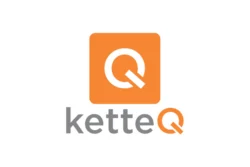
New York, NY - Aug 21, 2025 (UTC) - Bluefish, the leading AI marketing platform for the Fortune 500, announced a $20 million Series A funding round led by NEA, with participation from Salesforce Ventures. Additional investors include Crane Venture Partners, Swift Ventures, and Bloomberg Beta, bringing total Bluefish funding to $24 million within 12 months of launch.
As AI becomes the first stop for product discovery and purchasing decisions, Bluefish helps enterprise marketers gain visibility and influence over AI-generated responses. Bluefish also unveiled its new Custom AI Audiences feature, which enables brands to manage their AI performance with unprecedented granularity and precision.
Over the last six months, Bluefish has grown revenue 10x and now counts Adidas, Tishman Speyer, and Omnicom among its enterprise customers.
This new financing will enable product expansion and help scale engineering and customer-facing teams.
This focus on enterprise is working. Bluefish has seen enormous customer demand since launch, with more than 80% of its customers coming from the Fortune 500, including category leaders across financial services, auto, CPG, and beauty brands.
The two-year-old company already operates globally, supporting major customers across international markets and languages.
“We’re living through a paradigm shift as AI transforms how consumers discover, evaluate, and buy—the stakes for global brands have never been higher. Bluefish was built from the ground up to support the needs of enterprises, and is led by a proven team that has guided CMOs and marketing teams through the last major transitions of the internet. We believe Bluefish is defining the enterprise category for AI marketing,” said Ann Bordetsky, Partner at NEA.
“Over the past year, the way consumers find and buy new products has radically changed, migrating from conventional search to AI,” said Bluefish CEO Alex Sherman. “Search marketers were the first to recognize this shift in consumer behavior, but it is increasingly clear that the entire enterprise marketing stack will need to be reimagined for AI. Successful marketers will need a suite of AI-native tools to track, measure, and optimize for this new channel. These tools will be critical to winning customers who are now spending more time in AI than on the open web. That’s what we are building at Bluefish.”
Strategic Goals and Use of Funds
Bluefish aims to redefine the enterprise marketing stack for the AI era by providing tools that allow brands to track, optimize, and measure their presence in AI-generated responses.
The funds will be used to:
- Expand product offerings, including enhancements to features like Custom AI Audiences.
- Scale the engineering team to accelerate development of AI-native tools.
- Grow customer-facing teams to support increasing demand from Fortune 500 clients.
- Support global operations and multilingual capabilities for international markets.
Historical Funding and Growth
Bluefish has rapidly secured funding and demonstrated strong growth since its inception.
| Funding Round | Amount | Lead Investors | Other Investors | Date |
|---|---|---|---|---|
| Seed | $4 million | Unknown | Unknown | 2024 |
| Series A | $20 million | NEA | Salesforce Ventures, Crane Venture Partners, Swift Ventures, Bloomberg Beta | August 20, 2025 |
In terms of growth, Bluefish has achieved 10x revenue increase over the last six months. The company now serves over 80% of its customers from the Fortune 500, including notable clients such as Adidas, Tishman Speyer, and Omnicom. Operating globally, Bluefish supports major customers across international markets and languages.
Bluefish’s Technology
Bluefish analyzes millions of prompt responses for the world’s largest brands, delivering robust insights into how large language models (LLMs) respond to consumers and present brand narratives.
The platform enables marketers to shape their AI presence with targeted optimizations that boost brand visibility, favorability, and message consistency across all major AI channels, including OpenAI’s ChatGPT, Meta AI, and Google AI.
Designed to support the entire marketing organization—including search, content, brand, and communications teams—key offerings include AI Monitoring, AI Optimization (AIO), and AIO Measurement.
These features allow brands to:
- Track AI positioning and performance with real-time monitoring of AI responses.
- Optimize content strategies based on opportunities identified by Bluefish data.
- Measure the impact of optimizations against custom AI segments and KPIs.
Bluefish provides full transparency into every prompt, response, and cited source, allowing customers to build custom prompt methodologies tailored to their business needs.
Industry Impact and Challenges
Bluefish is addressing the shift in consumer behavior toward AI-driven product discovery, helping brands maintain control over their narratives in AI responses. This has a significant impact on industries like financial services, automotive, consumer packaged goods, and beauty, where brand perception directly influences purchasing decisions.
However, challenges include the temptation to produce excessive low-quality content to influence LLMs, which Bluefish counters by emphasizing higher-quality, targeted content. Another challenge is the lack of established best practices for generative engine optimization (GEO), as opposed to traditional SEO, requiring brands to adapt quickly to evolving AI technologies.
Market Context and Industry Trends
The marketing landscape is undergoing a paradigm shift as consumers increasingly turn to AI platforms like ChatGPT and Google AI for product discovery, evaluation, and purchasing decisions, spending more time in AI than on the open web.
This migration from conventional search to AI necessitates reimagining the entire marketing stack. Trends include the rise of AI-native tools for tracking, measuring, and optimizing brand performance in AI channels, with a focus on enterprise-grade solutions that offer granularity and precision.
Stakeholder Insights
A lot of AI marketing platforms are trying to be everything for everyone, the company’s CEO Alex Sherman told AdExchanger. But that isn’t Bluefish’s goal.
Bluefish was developed “exclusively to support the Fortune 500,” said Sherman, who was CEO and co-founder of the now-defunct retail media platform PromoteIQ, which he sold to Microsoft in 2019.
Reaching an audience effectively isn’t just about flooding the web with content, Sherman said, although many brands are inclined to do just that. An excess of low-quality content is “wildly unacceptable,” he said, but tempting because it’s easy to produce.
Instead, Bluefish urges brands to generate a smaller quantity of higher-quality, targeted content so they can understand “not just how their brand is being portrayed,” Sherman said, “but why it’s being portrayed that way.”
Bluefish acts as a “compass,” Sherman said, guiding its clients toward the specific platforms and types of data they should focus on to fill in the gaps in their marketing with the sort of data an LLM looks for.
About Bluefish
Bluefish is the AI marketing platform for enterprise brands. As product discovery transitions to AI platforms like ChatGPT and Google AI, Fortune 500 brands use Bluefish to gain visibility and influence over this critical new channel. Bluefish is led by the team behind PromoteIQ (acquired by Microsoft) and LiveRail (acquired by Facebook) and is headquartered in New York City.
Future Outlook
As AI marketing continues to evolve, Bluefish predicts that advertisers will focus more on how their products are perceived by AI, unlocking new best practices for GEO. The company plans to continue expanding its platform to meet the growing demands of enterprise clients, ensuring they maintain a competitive edge in the AI-driven market.
Learn more at bluefishai.com.
Source : Bluefish




